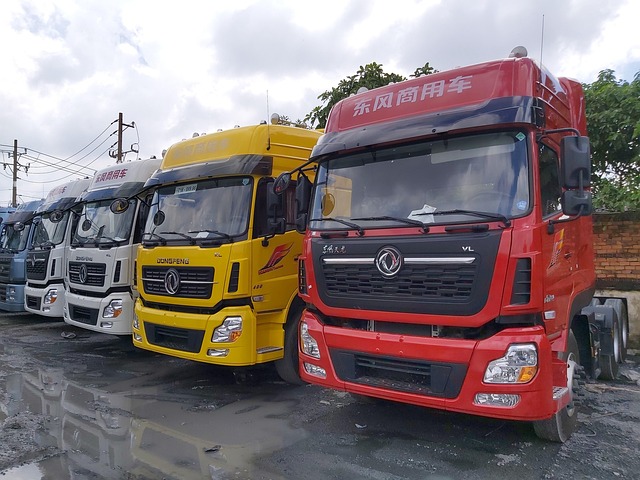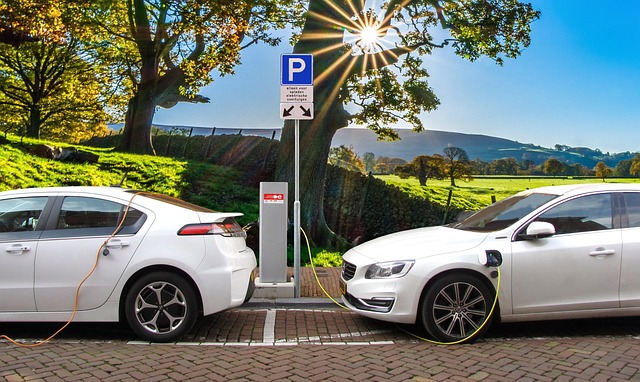Registering a car in California involves understanding specific requirements and gathering essential documents. Before diving into the process, familiarize yourself with California’s car registration rules. This includes verifying your vehicle’s identification number (VIN) through a process known as VIN verification. You’ll need to gather necessary documents for this step, which is crucial for successful registration. By following these guidelines, you can efficiently navigate the process and obtain your California registration certificate.
- Understand California Car Registration Requirements
- Gather Necessary Documents for VIN Verification
- Perform Vehicle Identification Number (VIN) Check
- Submit Application and Fees to DMV
- Receive Your California Registration Certificate
Understand California Car Registration Requirements

Before registering your car in California, it’s crucial to understand the state’s specific requirements. One key aspect is ensuring accurate and up-to-date vehicle information, which starts with a thorough vin verification. The Vehicle Identification Number (VIN) is a unique code that identifies your car, and it plays a vital role in the registration process. In California, this vin inspection is typically conducted by the Department of Motor Vehicles (DMV).
The state mandates that all vehicles operating on California roads be properly registered, which involves verifying ownership through the VIN and ensuring the vehicle meets safety standards. Additionally, for convenience, many residents opt for a mobile vin verification service, allowing them to complete the initial check-in process from the comfort of their homes or offices. This modern approach streamlines the traditional registration process, making it more accessible for all California car owners.
Gather Necessary Documents for VIN Verification

Before registering your car in California, you’ll need to gather several crucial documents for the VIN (Vehicle Identification Number) verification process. This step is essential as it ensures the vehicle’s history and authenticity. For a smooth and efficient registration experience, prepare the following:
1. Your vehicle’s title, which shows proof of ownership.
2. A valid driver’s license or state-issued ID card.
3. The current registration certificate from your previous state (if applicable).
4. Insurance proof, demonstrating that you have a valid policy covering the car.
5. A completed and signed California Vehicle Registration Application form.
6. If transferring ownership, a Bill of Sale or any other legal document supporting the transaction. Additionally, ensure you have access to your vehicle’s VIN—this can usually be found on the dashboard near the window or on the vehicle’s registration documents. For convenience, many individuals opt for a mobile vin inspection or use a mobile vin verifier to streamline this process.
Perform Vehicle Identification Number (VIN) Check

Before you register your car in California, it’s crucial to perform a Vehicle Identification Number (VIN) check. This step is essential for verifying the vehicle’s history and ensuring it meets all legal requirements. A VIN inspection provides critical information about the car’s past, including any accidents, outstanding loans, or potential issues that could affect its registration.
In California, you can conduct a VIN verification through various methods, one of which is using a mobile vin inspection service. These services allow you to check a vehicle’s history quickly and conveniently by providing a detailed report via phone or online. This approach saves time and effort compared to traditional methods, making it an attractive option for California residents looking to register their cars efficiently.
Submit Application and Fees to DMV

Once you have gathered all the necessary documents, it’s time to submit your application and fees to the DMV. This crucial step involves completing an Application for Title and Registration (Form DV-140), which can be obtained online or in person at any California DMV field office. Along with this form, you’ll need to pay the required registration fees, which vary based on the type of vehicle.
A key component of this process is ensuring accurate vin verification. This can be done efficiently with a mobile vin verifier, which allows for quick and convenient inspection of your vehicle’s unique identification number. The vin (vehicle identification number) is typically located on a plate at the driver’s side door frame or under the hood. By using a mobile vin verification service, you can ensure that your car’s information aligns with DMV records before finalizing registration.
Receive Your California Registration Certificate

After completing the registration process with the DMV, you’ll receive your California Registration Certificate—a crucial document for vehicle ownership in the state. This certificate verifies that your car meets all necessary safety and environmental standards, ensuring it’s safe to hit the road. It includes important details like your vehicle identification number (VIN), which is unique to every car and plays a vital role in identifying your vehicle during transactions or in case of theft.
For added convenience, many drivers opt for a mobile VIN verifier or conduct a mobile VIN inspection. These services allow you to verify your car’s history and ensure it matches the information on your registration certificate. A quick and easy process, these mobile verifications can be done right from your smartphone, providing peace of mind as you begin enjoying your newly registered vehicle on California’s highways and byways.
Registering a car in California involves understanding specific requirements, gathering essential documents, and completing a VIN verification process. By adhering to these steps—from preparing necessary paperwork to submitting applications and fees—you’ll be well on your way to securing your vehicle’s California registration certificate. Remember, accurate and complete information is key to a smooth registration experience.
